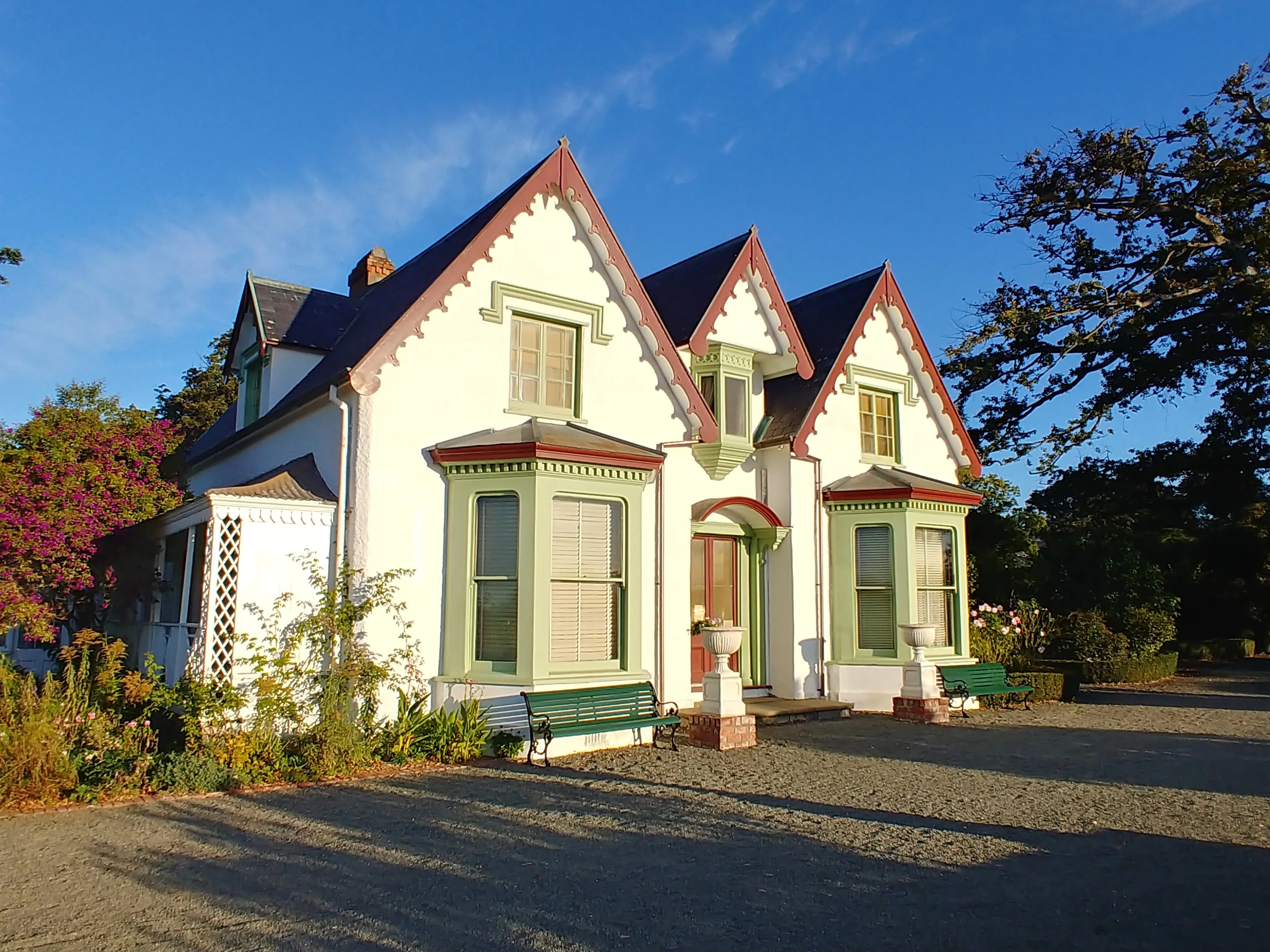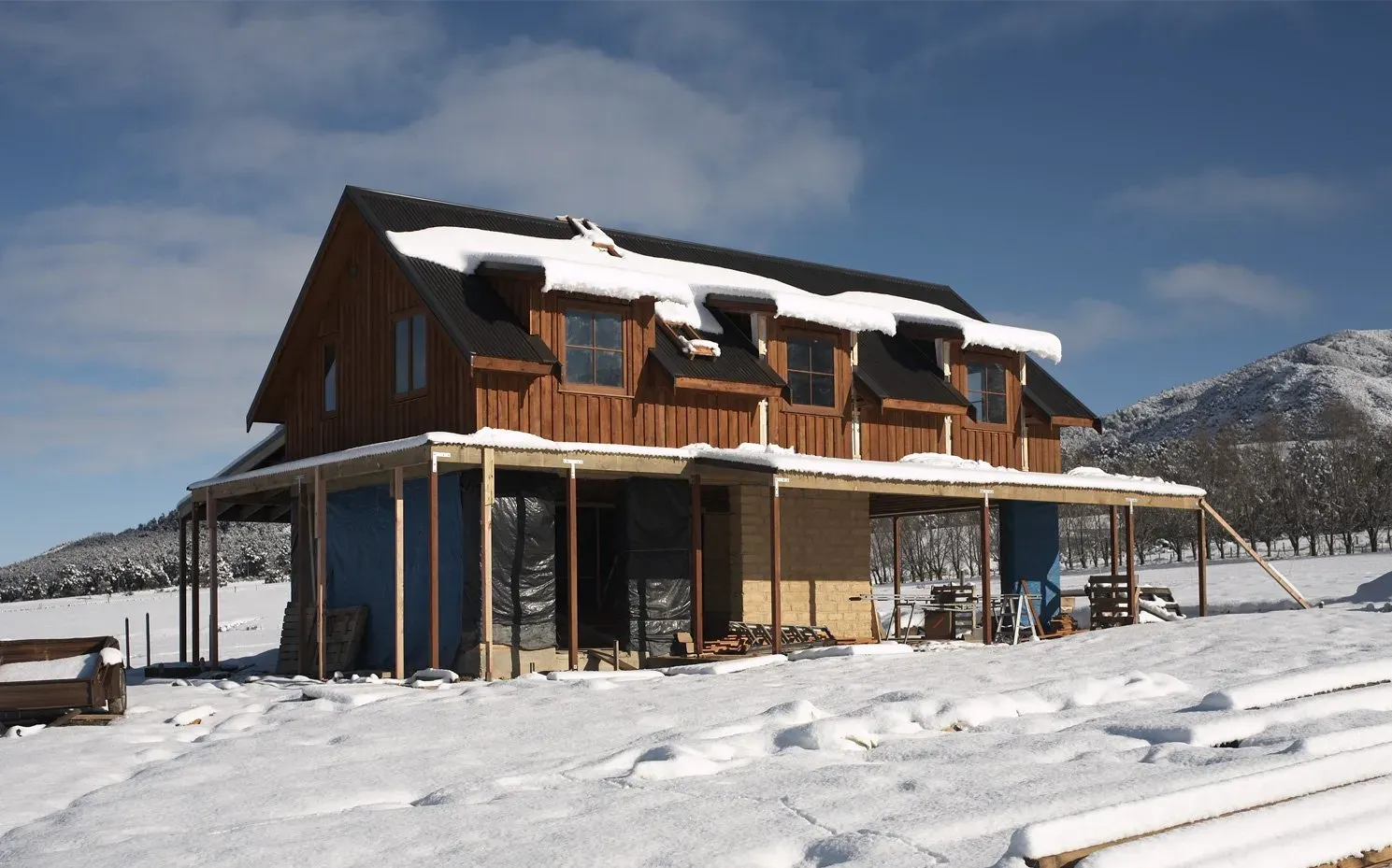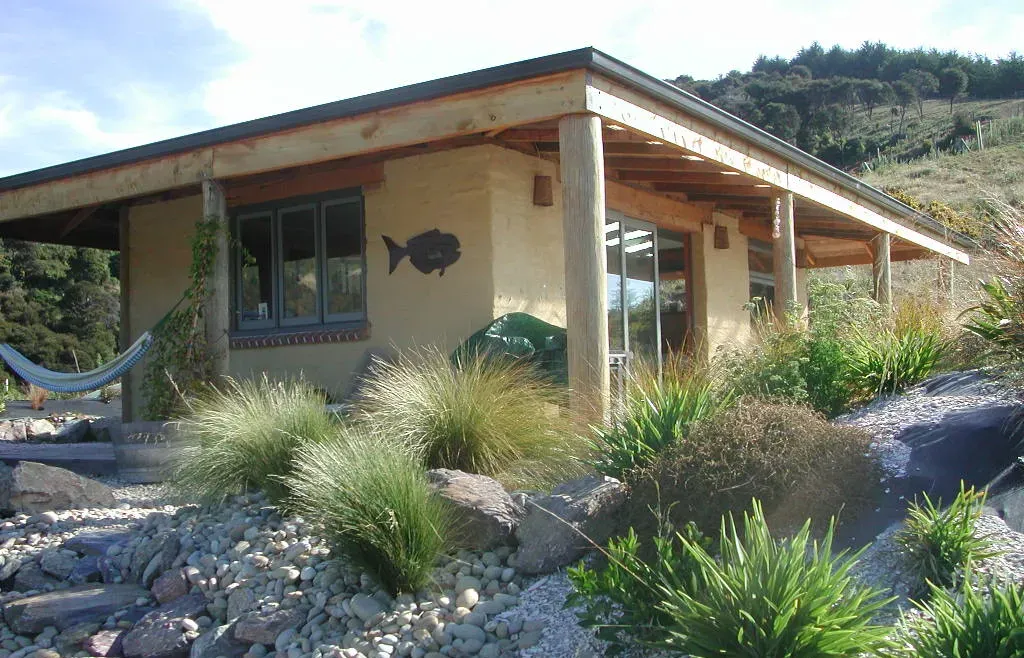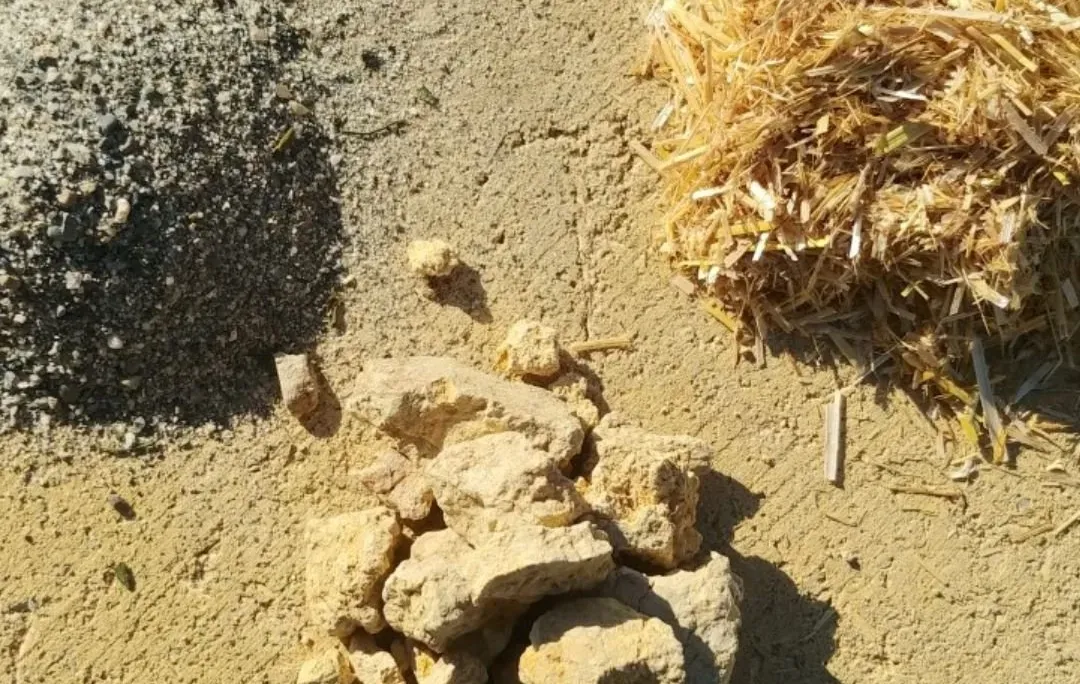Let's Get Mud on Our Hands: Entering the World of Natural Building
Embarking on the journey of natural building is like rekindling a friendship with the Earth. It's a hands-on, feet-on-the-ground adventure that reconnects us with the raw materials our precious planet offers. Whether you're crafting a cozy cob cottage or an Adobe retreat, natural building is about more than just structures—it's about sustainability, community, and creating homes that integrate and breathe with the environment.
Key Takeaways
- Natural building is an eco-friendly approach that utilizes local, sustainable materials.
- It empowers individuals to construct their own homes with a lower carbon footprint.
- Understanding the basics of natural materials is crucial for a successful build.
- The advantages of natural building extend beyond the environment to health and economics.
- Local and recycled resources play a significant role in the natural building process.
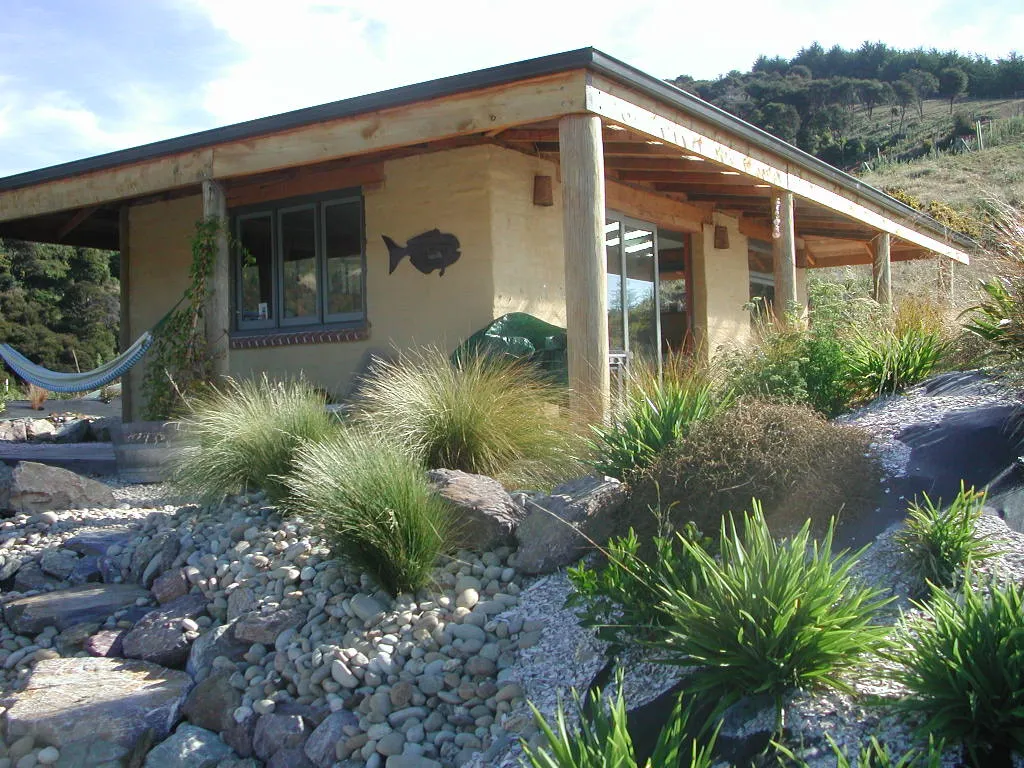
What Makes a Building Natural?
When we talk about natural buildings, we're referring to structures made from materials that are minimally processed, locally sourced, and often renewable. These buildings are designed to coexist with their surroundings, minimizing their impact on the environment while maximizing comfort and functionality for those who dwell within them.
Defining Natural Building
At its core, natural building is about using what the Earth provides to create shelters that are both sturdy and sustainable. This means selecting materials like clay, sand, straw, and timber that are abundant and easily replenished. But it's not just about the materials; it's also about the methods—using techniques that have been honed over centuries to stand the test of time.
The Role of Local and Recycled Resources
In a world where shipping materials across the globe is the norm, natural building takes a different tack. It's about tapping into local resources—digging your hands into the soil of your own backyard, using local biobased materials like straw or wood shavings, or salvaging timber from a nearby deconstruction. This not only reduces transportation emissions but also fosters a deeper connection between your home and its natural setting.
Recycling is another cornerstone of natural building. By repurposing materials that would otherwise end up in a landfill, you're not just saving money—you're also making a statement about the value of what already exists. This could mean turning old glass bottles into a stunning mosaic window or reclaiming barn wood for a rustic interior finish.
Advantages of Embracing the Earth
Building naturally comes with a host of benefits that extend far beyond the satisfaction of creating something with your own hands. It's about crafting a living space that grows out of the land rather than imposing on it. This harmonious approach to building has advantages that ripple out to your health, your wallet, and the planet.
Eco-Friendly Aspects
There is no denying that conventional construction can be very tough on the environment, contributing significantly to issues such as resource depletion, air and water pollution, waste, and greenhouse gas emissions. Natural building, however, is much more sustainable and can even be regenerative.
- Reduced carbon footprint due to local sourcing of materials.
- Minimized waste through the use of renewable and recyclable resources.
- Lower energy consumption for heating and cooling due to natural insulation properties.
- Decreased reliance on toxic building materials, leading to healthier ecosystems.
- Preservation of traditional building techniques that have minimal environmental impact.
Health Benefits
Living in a natural building isn't just good for the planet; it's good for you, too. These homes breathe—literally. They regulate humidity naturally, reducing the risk of mold and respiratory issues. Plus, the absence of synthetic materials means the air inside is free from the volatile organic compounds (VOCs) that often plague modern buildings.
- Natural materials provide better indoor air quality, free from harmful chemicals.
- Regulated humidity levels create a comfortable living environment.
- Thermal mass in earthen walls can help mitigate temperature fluctuations.
- Use of non-toxic finishes and paints create low-allergen and low-VOC living environment.
- Connection to natural elements has been shown to reduce stress and improve mental health.
Economic Upsides
The financial benefits of natural building are as solid as the earthen walls you might erect. By using local natural resources, you cut down on transportation costs and could make your own building materials at a fraction of cost of store-bought products. And, if you're willing to roll up your sleeves, the labor can be as affordable as your own sweat equity. Over time, the energy efficiency of a well-designed natural home can lead to significant savings on utility bills.
Building Blocks: Components of your Natural Building
Now, let's get down to the nitty-gritty: the materials and methods that form the backbone of natural building. From foundations to roofs, every choice you make should be informed by the climate, the landscape, and the resources at your disposal.
Foundation: Understanding the Basics
The foundation is where your home meets the earth, and in natural building, it's crucial to get this interface right. A well-designed foundation provides stability and prevents moisture from wicking up into the walls. Using local stone or recycled concrete can keep this part of your build in harmony with the natural ethos if possible.
Walls: Choosing the Right Material
Walls are the most visible part of any natural building, and the materials you choose can vary widely. Cob, straw bale, and Adobe each have their own unique properties and aesthetic appeal. Your choice should balance the local climate, availability of materials, and the specific thermal and structural needs of your home.
- Cob: A mixture of clay, sand, straw, and water, either installed in shutters or sculpted by hand.
- Straw bale: Highly insulative and quick to assemble, but there is a lot of labour in the plaster side of things.
- Adobe and Low-density Adobe: Durable, solid and simple building system, with excellent thermal mass and some insulation properties depending on the density.
- Timber frame with infill: Combines the strength of wood with the insulation of natural materials.
Roofing: Sheltering Naturally
The roof is your home's good hat that protects it from the elements. Natural builders often opt for living roofs, which provide insulation and habitat space. But a low-maintenance corrugated iron roof is also an option that stands up to environmental scrutiny. Whichever route you take, ensure it's watertight through careful detailing of flashings.
Interiors: Earth-Friendly Aesthetics
Inside your natural home, beauty and function should go hand in hand. Earthen plasters, natural paints, and reclaimed fixtures can all contribute to a space that feels good to be in. The key is to choose finishes that are non-toxic and sustainably produced, ensuring that your home's interior is as healthy and natural as its exterior.
- Earthen plasters: Non-toxic and allow walls to "breathe."
- Reclaimed wood: Adds character and reduces demand for virgin timber.
- Natural finishes, paints and oils: Beautify wood and walls without off-gassing harmful chemicals.
- Recycled glass and metal: Durable, stylish, and environmentally friendly options for fixtures and finishes.
Tool Time: Equipping Yourself for Natural Building
As you prepare to dive into your first natural building project, gathering the right tools will make process easier. Some tools you'll need are likely already in your toolbox, while others might be a bit more specialized.
Must-Have Tools for Beginners
- Shovels: For digging foundations and gathering materials like clay and sand.
- Measuring tape, level and stringlines: Accuracy is key in ensuring your build is balanced and stable.
- Saws: Whether it's a hand saw or a power saw, you'll need one for cutting timber. If you are working with Adobes, you will want to use a masonry saw.
- Hammers and mallets: For driving stakes and assembling frames.
- Wheelbarrow: Your best friend for moving heavy materials across the job site.
- Buckets and soaking bins: You can't have enough buckets! You will need them for everything: hauling mortar, plaster, water, natural paints, etc
- Work gloves: Protect your hands when handling rough materials. For the work with earth we recommend using dishwash gloves, which also double up as "tools" because you can use them to smooth surfaces and round corners effectively.
- Trowels: Essential for applying and smoothing earthen plasters.
- Sieves: For sieving clay and sand when you make finer plasters.
- Tarps: For mixing cob and mortar by foot-stomping.
With these basic tools, you'll be well on your way to starting your natural building adventure. Remember, quality matters more than quantity; investing in a few sturdy tools will pay off in the long run.
Resourceful DIY Instruments
Embracing the spirit of natural building often means getting creative with your tools. Many natural builders fashion their own instruments from scrap materials, adding a personal touch to the process. For example, a simple wooden float for applying plasters can be made from a flat piece of wood and a handle. Or, you might construct a tamper from a heavy log and a sturdy pole to compact earth for a rammed earth wall.
Keep an eye out for materials that can be repurposed. An old window sash can become a straightedge, and a piece of burlap can be used for texturing plasters. This resourcefulness not only saves money but also aligns perfectly with the principles of sustainability that are at the heart of natural building.
Learning by Doing: Starting Your First Natural Building Project
There's a saying that the best way to learn is by doing, and this rings especially true in natural building. While reading and research are important, there's no substitute for the experience gained by actually building. Your first project will be an invaluable teacher, so approach it with an open mind and a willingness to learn from the process.
Planning Your Design
Before your feet hit the ground, take the time to plan your design carefully. Consider the land, the climate, and your own needs. Sketch out your ideas, and don't be afraid to adjust them as you go. It's also a good idea to check local building codes and regulations to ensure your project is compliant.
Think about the size and shape of your building. Will it be a small studio or a full-sized home? How will the sun's path affect your indoor temperature? Where will you source your materials? Answering these questions early on will guide your project to success.
Step-by-Step Guidance
Breaking your project down into manageable steps is the key to not feeling overwhelmed. Start with the foundation, ensuring it's level and properly drained. Then move on to the walls, selecting the right natural material for your climate and design. Remember to take your time with each step, and don't be afraid to ask for help or advice from more experienced natural builders.
As you progress, keep detailed notes and photographs of your work. This documentation will not only help you remember the steps you've taken but will also be invaluable if you ever need to repair or explain your building techniques to others.
Common Pitfalls and How to Avoid Them
Every journey has its bumps, and natural building is no exception. Being aware of common pitfalls can help you navigate around them and keep your project on track.
Preparation Missteps
Underestimating the time, materials and labour required can lead to frustration. Make sure you have a clear plan and a realistic timeline. A detailed plan and a generous timeline are your best defenses against this common pitfall. Don't overlook the importance of a well-prepared site; ensure the land is cleared, leveled, and ready for construction to avoid costly and time-consuming adjustments later on. Also, don't skimp on the foundation. It's tempting to rush this step, but a solid foundation is crucial for the longevity of your structure.
Another common mistake is not accounting for the weather. If you're building with cob or adobe, for example, you'll need to plan for drying times and protect your work from rain. Keep an eye on the forecast and have tarps ready to cover your work if needed.
Material Choices and Climate Considerations
Choosing the wrong materials for your climate can result in a building that's too hot, too cold, or prone to moisture problems. Do your research and select materials that are well-suited to your environment. For instance, straw bale is excellent for insulation in cold climates, while earthbags might be better in areas prone to flooding.
Remember, natural building is as much an art as it is a science. Research and local knowledge are important to make the best material and technique choices. Be prepared to adapt and innovate as you go. With careful planning, a good set of tools, and a willingness to learn, you'll be well on your way to creating a natural home that will perform well for years to come.
Join the Community: Networking and Support
Building naturally is not just about constructing a house; it's about joining a community of like-minded individuals. The support and knowledge you can gain from others who share your passion for natural building are invaluable. Whether it's learning new techniques, finding resources, or just getting some encouragement, the natural building community is an incredible resource.
Finding Local Workshops and Courses
One of the best ways to learn and connect is by participating in workshops and courses (both in-person and online). These can range from weekend introductions to full apprenticeships. Local natural building organizations often host events where you can get your hands dirty and learn by doing. Additionally, eco-villages and sustainable living centers sometimes offer on-site training that can be a deep dive into the world of natural building.
Engaging with Online Communities
If local options are scarce, the internet is a treasure trove of forums, social media groups, and online courses dedicated to natural building. Online communities are great for asking questions, sharing successes and challenges, and staying motivated.
Our in-depth online program Earthbuilding Academy is designed for you to learn on your own project with our expert guidance. This program has been created with our students in mind. Our main desire is to make this as relevant, practical and supportive of your own natural building journey as possible.
Many find that virtual connections lead to real-world friendships and opportunities to collaborate on projects.
FAQ
Is natural building more expensive than conventional building?
This is a common question with a not-so-straightforward answer. Initially, natural building can be less expensive due to the use of low-cost, locally-sourced materials and the potential for DIY labor. However, it can also be more costly if you opt for specialized techniques or hire experienced builders. In the long term, the energy savings and durability of natural buildings often lead to greater financial benefits compared to conventional homes. We also find that the re-sale value of well-executed natural homes is higher than their conventional counterparts.
How long do natural buildings last?
Natural buildings have stood the test of time, with some earthen structures lasting for many centuries. The key to longevity is proper design, quality construction, and regular maintenance. Structures like cob cottages or Adobe buildings can last for hundreds of years if they're built with a good foundation, proper drainage, and a durable roof. Regular upkeep, like reapplying natural plasters and ensuring the roof remains watertight, will extend the life of any natural building.
What are the best natural materials for insulation?
Insulation is critical for comfort and energy efficiency, and natural materials excel in this area. Straw bales are one of the top choices for insulation because of their high R-value and ease of use. Other excellent insulators include cellulose (recycled paper and wood shavings, for example used in low-density Adobe), sheep's wool, and hemp. These materials not only insulate well but also contribute to a healthy indoor air quality by being breathable and non-toxic.
Are there building codes for natural buildings?
Building codes vary by region, but many areas now recognize and include provisions for natural building techniques. It's important to check with local authorities early in the planning stage. In some cases, you may need to work with an engineer or architect to ensure your plans meet local codes. Some regions may not have specific codes for natural buildings, requiring you to advocate for your project and educate officials about these sustainable practices. We highly recommend you familiarize yourself with the NZ Earth Building Standards, as these cover materials and construction in-depth, even for areas affected by earthquakes and wind-driven rains.
Can I combine natural building techniques with modern technologies?
Absolutely! Blending natural building methods with modern technology can lead to innovative, sustainable homes. For example, integrating solar panels with a straw bale house can create a highly energy-efficient home that generates its own power. Similarly, using modern foundation systems can enhance the durability and performance of earthen walls. It's all about finding the right balance that aligns with your sustainability goals and local climate.
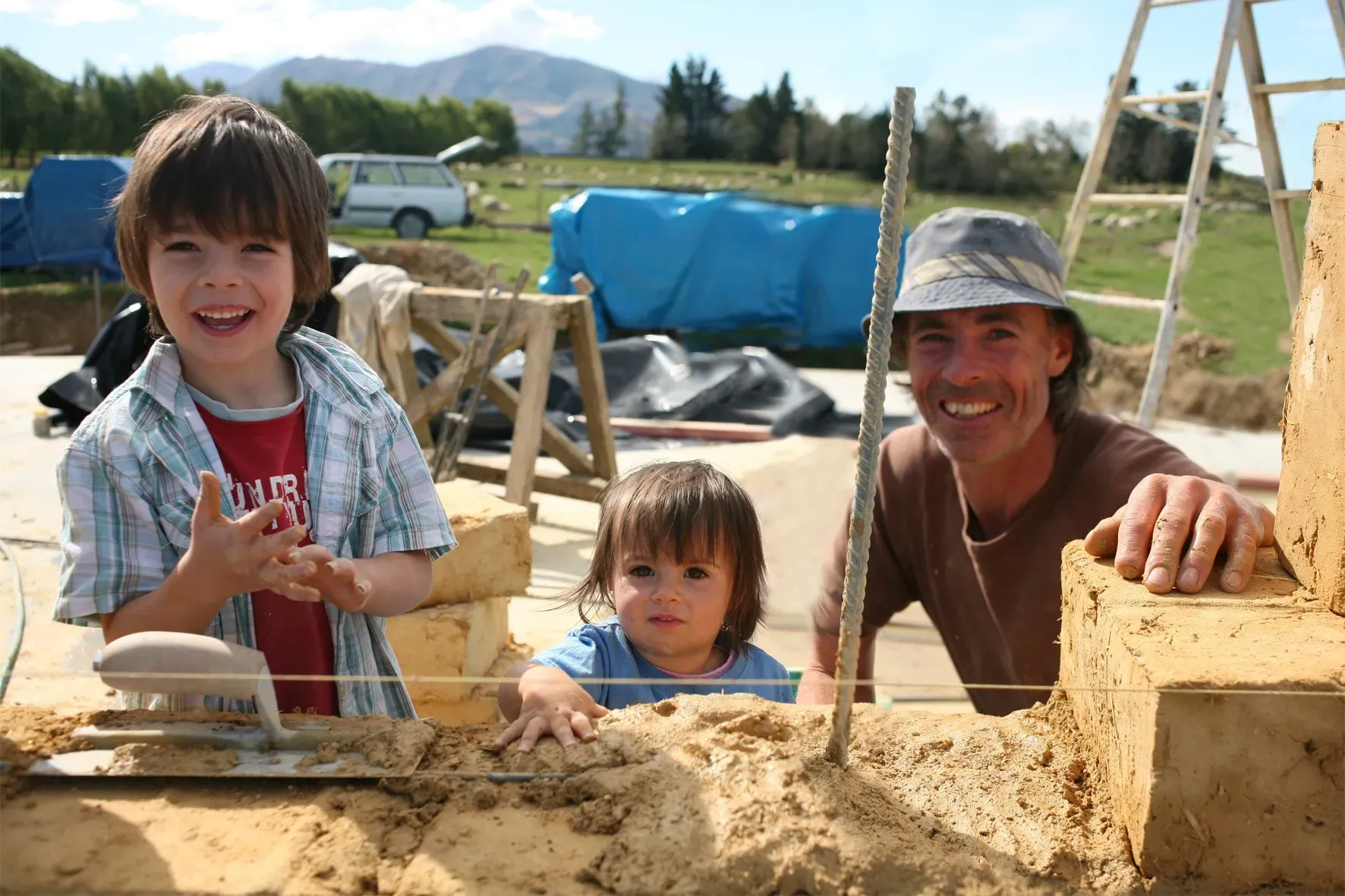
In conclusion, natural building is an enriching journey that connects you with the environment and your community. It's a path that leads to sustainable living, personal fulfillment, and the creation of homes that are healthy, economical, and truly one-of-a-kind.
As you embark on your natural building adventure, remember that each brick of mud and straw is a step towards a more sustainable future. So, roll up your sleeves, get your hands dirty, and build not just a house, but a legacy that will stand for generations to come.
Interested to start small? Check out our free online program "Design your first Earthen Tiny House".

